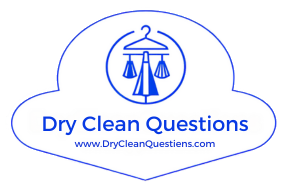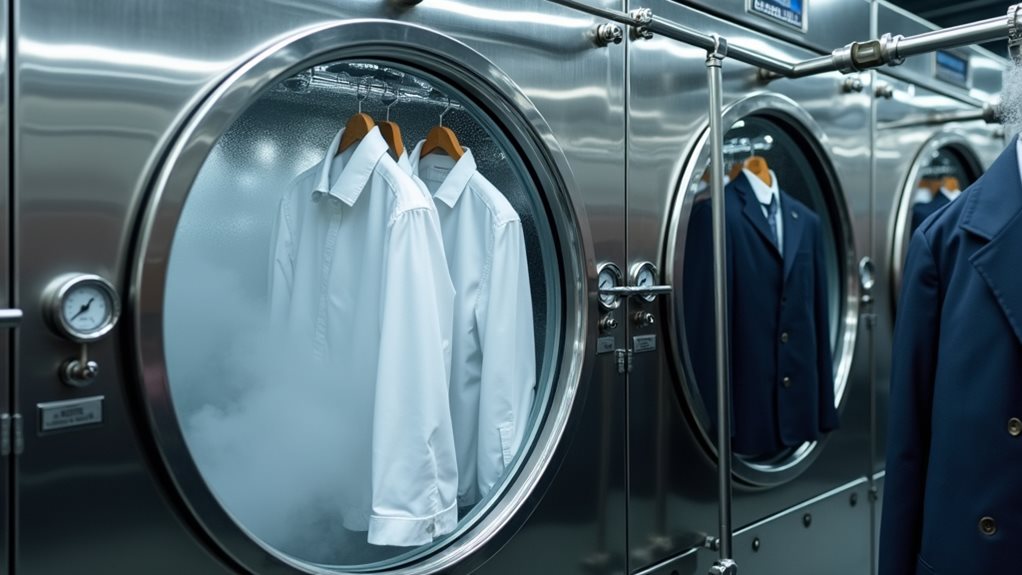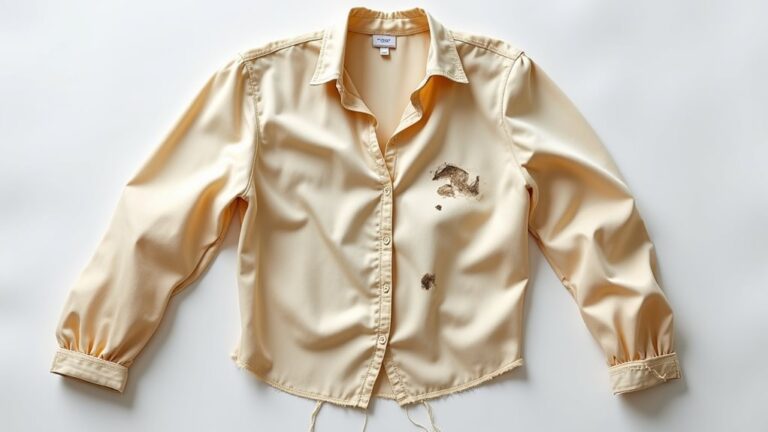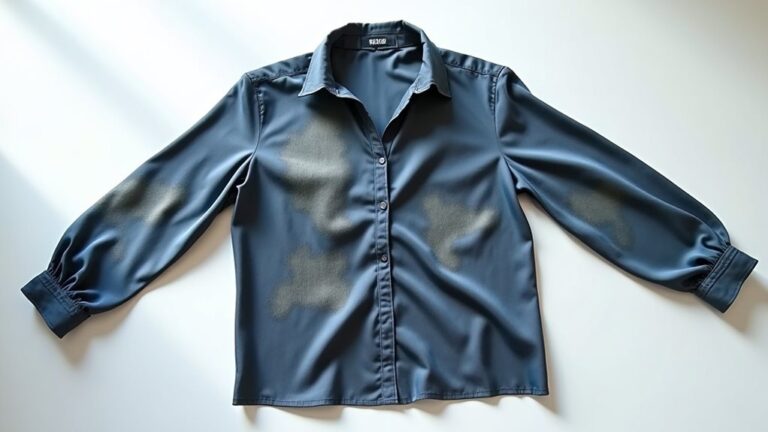When you drop off your favorite silk blouse at the dry cleaner, it won’t see a drop of water during cleaning. Instead, technicians inspect and tag your garment, pre-treat any stubborn stains, then place it in a machine that uses chemical solvents like perchloroethylene or eco-friendly alternatives to dissolve oils and dirt that regular detergent can’t handle. After a final inspection, they’ll press and steam your clothes to perfection, and you’ll discover there’s more fascinating science behind this process.
What Is Dry Cleaning and How Does It Differ From Regular Washing
While most of us have grown up tossing our clothes into washing machines without a second thought, dry cleaning operates on an entirely different principle that can seem almost magical when you first understand it.
Unlike regular washing that uses water and detergent to penetrate fabric fibers, the dry cleaning process relies on chemical solvents to clean surfaces without saturating your garments. This method’s particularly brilliant for delicate fabrics like silk and wool, plus it’s amazing at tackling oil-based stains that water-based cleaning agents simply can’t handle.
Though traditional solvents posed health and environmental risks, today’s environmentally friendly solvents make the process safer.
The typical process involves pre-treating stains, immersing clothes in a solvent bath, followed by drying and pressing to restore the garment’s original appearance.
When you see garments labeled “dry clean only,” they’re asking you to protect your clothes through this specialized method.
The Step-by-Step Dry Cleaning Process

Five distinct steps transform your wrinkled, stained garments into pristine pieces that look like they’ve never seen a day of wear, and honestly, watching this process unfold feels a bit like witnessing clothing magic in action.
First, professional dry cleaning begins when technicians inspect and tag your clothes, identifying problem areas where stains are pre-treated with specialized solvents.
Next, your garments enter cleaning machines that use non-water-based solvents instead of water, allowing gentle agitation that won’t damage delicate fabrics during the cleaning cycle.
After spinning and drying to remove excess solvent, a thorough post-cleaning inspection checks for remaining stains, followed by finishing touches like pressing and steaming that make everything look absolutely perfect 👌.
Throughout this process, the cleaning solution undergoes solvent recovery where it is distilled and recycled for future use, making the dry cleaning process more environmentally efficient.
Types of Solvents Used in Professional Dry Cleaning
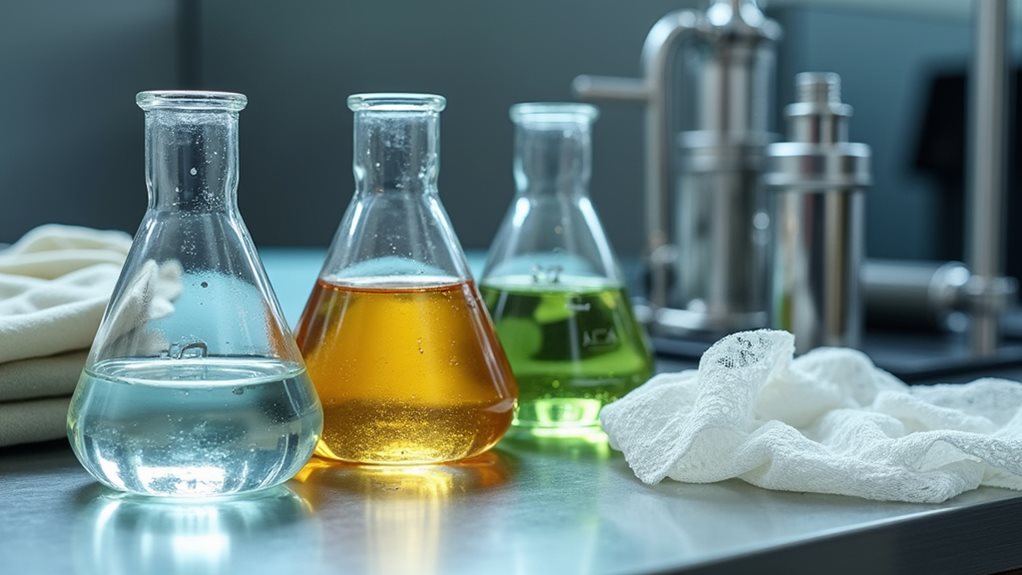
Because understanding what actually cleans your clothes matters more than you might think, let’s plunge into the fascinating world of dry cleaning solvents, where chemistry meets your favorite silk blouse in ways that’ll probably surprise you.
Professional dry cleaning relies on several chemical solvents to clean your garments without water, and honestly, the science behind removing stains is pretty incredible:
- Perchloroethylene (PERC) – This powerhouse solvent dominates the cleaning process that uses traditional methods, though its environmental impact raises concerns.
- Hydrocarbon solvent – Gentler petroleum-based options that treat delicate fabrics like old friends.
- Glycol ethers – The rising stars of eco-friendly dry cleaning, balancing effectiveness with environmental responsibility.
Modern solvent in dry cleaning technology now includes innovative options like liquid CO₂, proving that sometimes the greenest solutions work best! 🌱
The most effective dry cleaning solvents share key properties including chemical stability, non-flammability, and the ability to dissolve oils and greases while remaining gentle on various fabric types.
When Your Garments Need Dry Cleaning Services
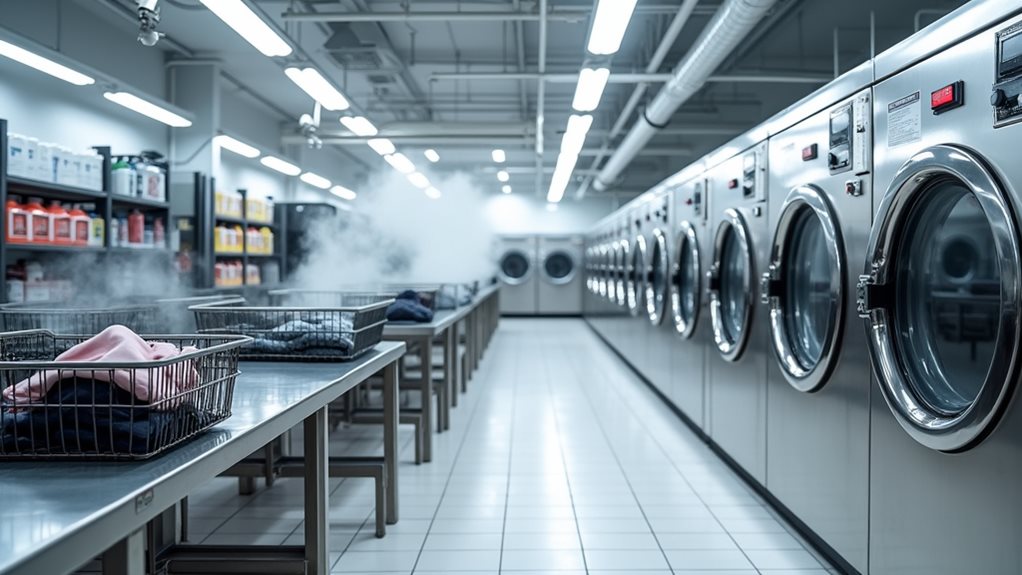
Now that you understand the chemical magic happening behind the scenes, you’re probably wondering when your clothes actually need this specialized treatment.
Trust me, after years of watching people attempt to wash silk ties in their washing machines (spoiler alert: it never ends well), I’ve learned that recognizing these moments can save you both heartbreak and money.
Your delicate fabrics like silk, wool, and cashmere absolutely require professional attention because home washing destroys their fibers faster than you’d think.
When you see “dry clean only” labels, don’t gamble—that gentle cleaning process preserves your investment.
Stubborn stains, especially oil-based ones, need a professional cleaner’s expertise, and your formal wear depends on proper clothing care to maintain its structure and appearance.
However, it’s worth noting that many “dry clean only” labels are manufacturer recommendations rather than strict requirements, and alternatives like hand washing with gentle detergents may work for some items.
Care Tips for Maintaining Dry Cleaned Clothing

Three simple habits can transform how long your dry cleaned garments stay fresh and beautiful, and honestly, I learned this the hard way after ruining a gorgeous wool blazer by shoving it straight into my overcrowded closet still wrapped in plastic (rookie mistake that haunted me for months).
Here are my crucial care tips for maintaining your investment pieces:
- Air first, store second – Hang garments in a well-ventilated area to eliminate solvent odors before storing them in breathable garment bags instead of plastic.
- Address stains promptly – Rush back to your dry cleaner immediately when accidents happen, because waiting makes removal increasingly harder.
- Give clothes breathing room – Let garments rest between wears, keep them from direct sunlight to prevent fade and damage, and you’ll extend lifespan greatly.
While dry cleaned clothes can get wet without permanent damage, delicate fabrics like silk or wool require extra caution when exposed to moisture to prevent shrinkage or water spots.
